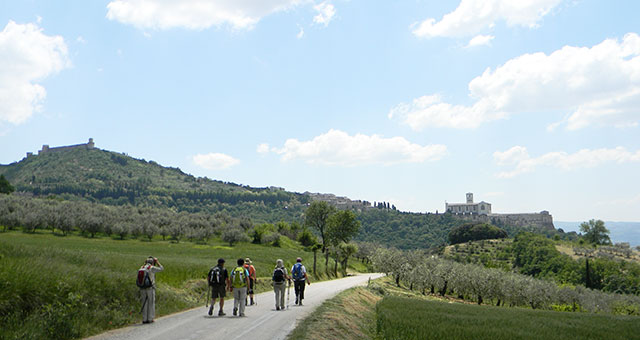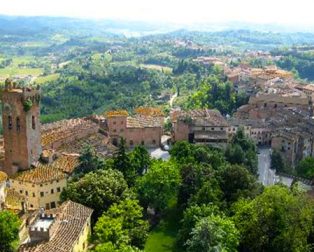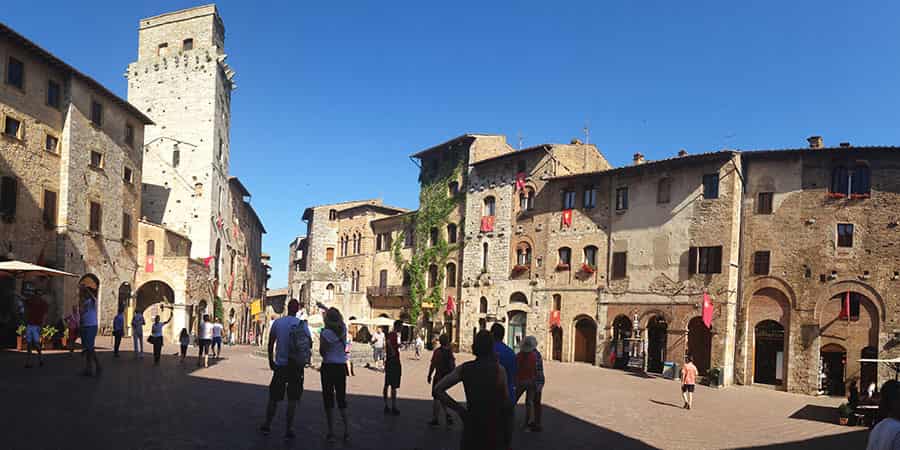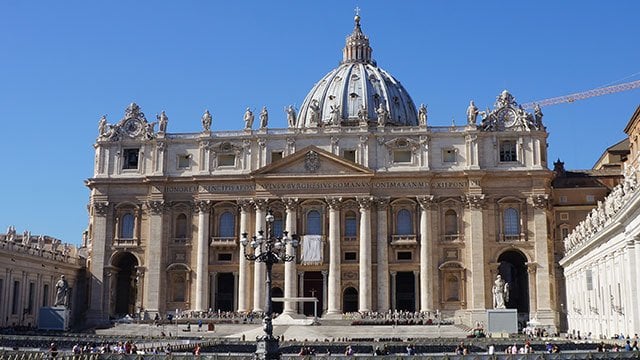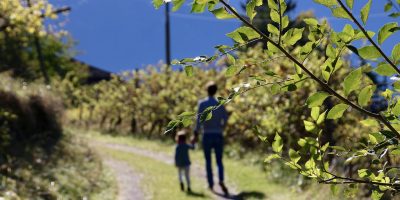The Via Francigena trail might not be as well known as the Camino de Santiago, but it has been a path taken by pilgrims across Europe for centuries. We explain the Via Francigena, the Camino to Rome, in 15 exciting and simple facts:
15 Via Francigena Facts
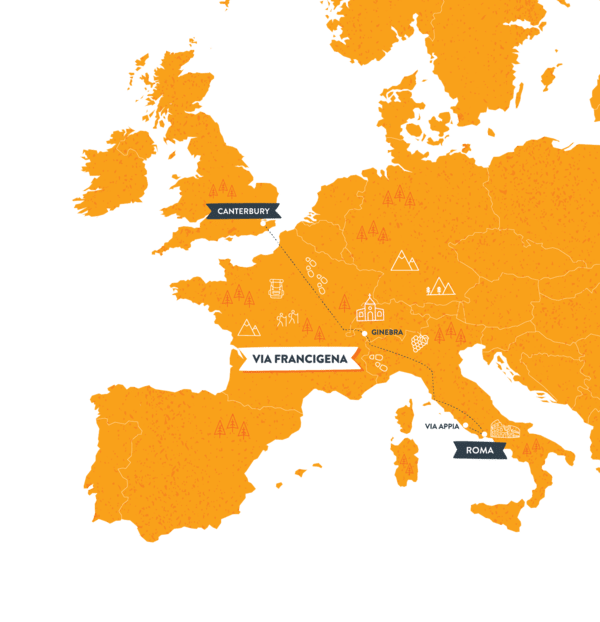
Distance and Route
- Trail Length
The Via Francigena covers 1,900 km from Canterbury to Rome. However, many other more popular and shorter routes, such as Lucca to Rome, the Tuscany route from Lucca to Siena, and the final 100km from Viterbo to Rome, can be walked. - Historical Path
It is one of the many routes European pilgrims took on their way to Rome since the Middle Ages. - Countries Traversed
The Via Francigena crosses four European countries: the UK, France, Switzerland, and Italy. It features areas of spectacular beauty and historic interest.
Historical Significance
- Sigeric the Serious
Sigeric the Serious, Archbishop of Canterbury, walked the route to Rome and recorded his travels in a journal in the 10th century. This can be considered the first-ever Via Francigena ‘guidebook,’ and the route today follows Sigeric’s trail as much as possible. - Route Variations
Slightly different variations have emerged in sections of the Via Francigena route to avoid bigger roads or areas unsuitable for walking or cycling. Some guidebooks indicate both itineraries, so walkers and cyclists can choose which one to follow.
Pronunciation and Recognition
- Pronunciation
It is pronounced Francheegena (with the accent on the ‘ee’), but to make it easier, you can also call it the Camino to Rome. - Cultural Itinerary
The Via Francigena route has been a Council of Europe European Cultural Itinerary since 1994 and a Major Cultural Route since 2004.
Pilgrimage and Participation
- Pilgrim Certificate
Once in Rome, you can request your Testimonium, a certificate of pilgrimage to Rome. - Participation Numbers
It is unclear how many people walk or cycle parts of the Via Francigena each year, but there were an estimated 2,500 in 2012 (Source: Cicerone Guides). Compared to over 300,000 who reached Santiago de Compostela in 2019.
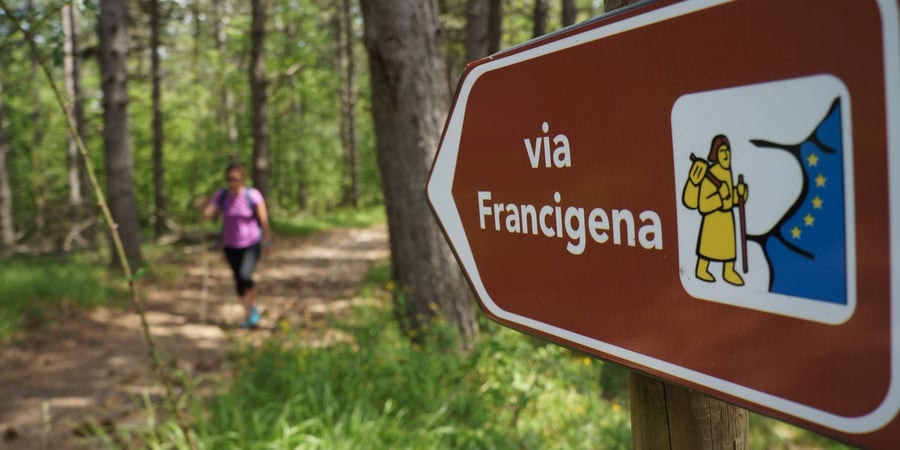
Way Markings
- Development Stage
The Via Francigena’s way markings are still in the development stage. They will vary greatly depending on the countries and regions. It is important to have a good guidebook or route notes and maps with you. - Marking Types
Markings are not as common or uniform as those on the Camino. Markings can be the Francigena pilgrim, the red and white stripes (GR marking), or combined. - Frequent Markings in Italy
Way-marks become more frequent in Italy, particularly as you get closer to Rome.
Accommodation and Travel Time
- Accommodation Availability
Accommodation, particularly in rural areas, can be limited. However, we have connections with a wide variety of accommodation types along the route. - Travel Time
It will take approximately three months to walk the Via Francigena, the Camino to Rome, from Canterbury to Rome, and a month and a half to cycle the route. However, you can do it in shorter sections with Italy, like the Full Via Francigena from Lucca to Rome. - Popular Sections
Many Francigena pilgrims choose to do separate sections at a time (one to two weeks, for instance). Some of the most popular sections are the Via Francigena across the Alps, walking to St Bernard’s Pass, the section from Lucca to Siena walking in Tuscany, and the last stretch walking into Rome.

We hope that you enjoyed these 15 Via Francigena facts. For more information about walking or cycling the Via Francigena or to have an itinerary tailored to you, please contact us.
